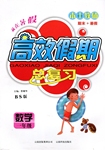
D. R. Gaul Middle School is in Union, Maine, a blueberry-farming town where the summer fair finds kids competing in pig scrambles and pie-eating contests.
Gaul, with about 170 seventh- and eighth-graders, has its own history of lower level academic achievement. One likely reason: Education beyond the basic requirements hasn’t always been a top priority for families who’ve worked the same land for generations. Here, few adults have college degrees, and outsiders (teachers included) are often kept at a respectful distance.
Since 2002, Gaul’s students have been divided into four classes, each of them taught almost every subject by two teachers. The goal: To find common threads across disciplines to help students create a big picture that gives fresh meaning and context to their classwork -- and sparks motivation for learning.
Working within state guidelines, each team makes its individual schedules and lesson plans, incorporating non-textbook literature, hands-on lab work and field trips. If students are covering the Civil War in social studies, they’re reading The Red Badge of Courage or some other period literature in English class. In science, they study the viruses and bacteria that caused many deaths in the war.
Team teaching isn’t unusual. About 77 percent of middle schools now employ some form of it, says John Lounsbury, consulting editor for the National Middle School Association. But most schools use four- or five-person teams, which Gaul tried before considering two-person teams more effective. Gaul supports the team concept by “l(fā)ooping” classes(跟班) so that the same two teachers stick with the same teens through seventh and eighth grades. Combining teams and looping creates an extremely strong bond between teacher and student. It also, says teacher Beth Ahlholm, “allows us to build an excellent relationship with parents.”
Ahlholm and teammate Madelon Kelly are fully aware how many glazed looks they see in the classroom, but they know 72 percent of their eighth-graders met Maine’s reading standard last year -- double the statewide average. Only 31 percent met the math standard, still better than the state average (21 percent). Their students also beat the state average in writing and science. And in 2006, Gaul was one of 47 schools in the state to see testing gains of at least 20 percent in four of the previous five years, coinciding roughly with team teaching’s arrival.
| A Classroom With Context | |
| Problems of the school | Being a farming town, it (1)_______ little in education before. |
| (2)_______ education is considered less important. | |
| The community is relatively (3)_______ rather than open to the outsiders. | |
| Ways of solving the problems | The division of classes is made and students are well (4)_______. |
| Individual schedules and lesson plans are (5)_______ by each team. | |
| A strong (6)_______ between teacher and student is established through combining teams and looping. | |
| Signs of (7)_______ | 72 percent of the eighth-graders (8)_______ Maine’s reading standard |
| (9)_______ percent higher than the state average in maths | |
| the school beating the state average in writing and science | |
| four of the previous five years (10)_______ at least 20 percent test gains | |
 暑假作業(yè)海燕出版社系列答案
暑假作業(yè)海燕出版社系列答案 本土教輔贏在暑假高效假期總復習云南科技出版社系列答案
本土教輔贏在暑假高效假期總復習云南科技出版社系列答案 暑假作業(yè)北京藝術與科學電子出版社系列答案
暑假作業(yè)北京藝術與科學電子出版社系列答案科目:高中英語 來源: 題型:閱讀理解
任務型閱讀(共10題;每小題1分,滿分10分)
請認真閱讀下列短文,并根據(jù)所讀內(nèi)容在文章后表格中的空格里填入最恰當?shù)膯卧~。
注意:每空格1個單詞。
D. R. Gaul Middle School is in Union, Maine, a blueberry-farming town where the summer fair finds kids competing in pig scrambles and pie-eating contests.
Gaul, with about 170 seventh- and eighth-graders, has its own history of lower level academic achievement. One likely reason: Education beyond the basic requirements hasn't always been a top priority for families who've worked the same land for generations. Here, few adults have college degrees, and outsiders (teachers included) are often kept at a respectful distance.
Since 2002, Gaul's students have been divided into four classes, each of them taught almost every subject by two teachers. The goal: To find common threads across disciplines to help students create a big picture that gives fresh meaning and context to their classwork -- and sparks motivation for learning.
Working within state guidelines, each team makes its individual schedules and lesson plans, incorporating non-textbook literature, hands-on lab work and field trips. If students are covering the Civil War in social studies, they're reading The Red Badge of Courage or some other period literature in English class. In science, they study the viruses and bacteria that caused many deaths in the war.
Team teaching isn't unusual. About 77 percent of middle schools now employ some form of it, says John Lounsbury, consulting editor for the National Middle School Association. But most schools use four- or five-person teams, which Gaul tried before considering two-person teams more effective. Gaul supports the team concept by "looping" classes (跟班) so that the same two teachers stick with the same teens through seventh and eighth grades. Combining teams and looping creates an extremely strong bond between teacher and student. It also, says teacher Beth Ahlholm, "allows us to build an excellent relationship with parents."
Ahlholm and teammate Madelon Kelly are fully aware how many glazed looks they see in the classroom, but they know 72 percent of their eighth-graders met Maine's reading standard last year -- double the statewide average. Only 31 percent met the math standard, still better than the state average (21 percent). Their students also beat the state average in writing and science. And in2006, Gaul was one of 47 schools in the state to see testing gains of at least 20 percent in four of the previous five years, coinciding roughly with team teaching's arrival.

查看答案和解析>>
科目:高中英語 來源:2013屆四川省成都外國語學校高三9月月考英語試卷(帶解析) 題型:閱讀理解
D. R. Gaul Middle School is in Union, Maine, a blueberry-farming town where the summer fair finds kids competing in pig scrambles and pie-eating contests.
Gaul, with about 170 seventh- and eighth-graders, has its own history of lower level academic achievement. One likely reason: Education beyond the basic requirements hasn't always been a top priority for families who've worked the same land for generations. Here, few adults have college degrees, and outsiders (teachers included) are often kept at a respectful distance.
Since 2002, Gaul's students have been divided into four classes, each of them taught almost every subject by two teachers. The goal: To find common threads across disciplines to help students create a big picture that gives fresh meaning and context to their classwork -- and sparks motivation for learning.
Working within state guidelines, each team makes its individual schedules and lesson plans, incorporating non-textbook literature, hands-on lab work and field trips. If students are covering the Civil War in social studies, they're reading The Red Badge of Courage or some other period literature in English class. In science, they study the viruses and bacteria that caused many deaths in the war.
Team teaching isn't unusual. About 77 percent of middle schools now employ some form of it, says John Lounsbury, consulting editor for the National Middle School Association. But most schools use four- or five-person teams, which Gaul tried before considering two-person teams more effective. Gaul supports the team concept by "looping" classes (跟班) so that the same two teachers stick with the same teens through seventh and eighth grades. Combining teams and looping creates an extremely strong bond between teacher and student. It also, says teacher Beth Ahlholm, "allows us to build an excellent relationship with parents."
Ahlholm and teammate Madelon Kelly are fully aware how many glazed looks they see in the classroom, but they know 72 percent of their eighth-graders met Maine's reading standard last year -- double the statewide average. Only 31 percent met the math standard, still better than the state average (21 percent). Their students also beat the state average in writing and science. And in2006, Gaul was one of 47 schools in the state to see testing gains of at least 20 percent in four of the previous five years, coinciding roughly with team teaching's arrival.
| A Classroom With Context | |
| Problems of the school | Being a farming town,it(71) little in education before. |
| Further education is considered (72)______________. | |
| The community is relatively(73) rather than open to the outsiders. | |
| Ways of solving the problems | The division of classes is made and students are well(74) . |
| Individual schedules and lesson plans are(75) by each team. | |
| A strong(76) between teacher and student is established through combining teams and looping. | |
| Signs of (77) | 72 percent of the eighth-graders(78) Maine's reading standard |
| (79)percent higher than the state average in maths | |
| the school beating the state average in writing and science | |
| four of the previous five years(80) at least 20 percent test gains | |
查看答案和解析>>
科目:高中英語 來源:2014屆湖南耒陽二中高三第一次月考英語卷(解析版) 題型:其他題
D. R. Gaul Middle School is in Union, Maine, a blueberry-farming town where the summer fair finds kids competing in pig scrambles(爭奪) and pie-eating contests.
Gaul, with about 170 seventh- and eighth-graders, has its own history of lower level academic achievement. One likely reason: Education beyond the basic requirements hasn't always been a top priority(優(yōu)先) for families who've worked the same land for generations. Here, few adults have college degrees, and outsiders(局外人) (teachers included) are often kept at a respectful distance.
Since 2002, Gaul's students have been divided into four classes, each of them taught almost every subject by two teachers. The goal: To find common threads across disciplines to help students create a big picture that gives fresh meaning and context to their class work -- and sparks(激發(fā)) motivation for learning.
Working within state guidelines, each team makes its individual schedules and lesson plans, incorporating non-textbook literature, hands-on lab work and field trips. If students are covering the Civil War in social studies, they're reading The Red Badge of Courage or some other period literature in English class. In science, they study the viruses and bacteria that caused many deaths in the war.
Team teaching isn't unusual. About 77 percent of middle schools now employ some form of it, says John Lounsbury, consulting editor for the National Middle School Association. But most schools use four- or five-person teams, which Gaul tried before considering two-person teams more effective. Gaul supports the team concept by "looping" classes (跟班) so that the same two teachers stick with the same teens through seventh and eighth grades. Combining teams and looping creates an extremely strong bond between teacher and student. It also, says teacher Beth Ahlholm, "allows us to build an excellent relationship with parents."
Ahlholm and teammate Madelon Kelly are fully aware how many glazed looks they see in the classroom, but they know 72 percent of their eighth-graders met Maine's reading standard last year -- double the statewide average. Only 31 percent met the math standard, still better than the state average (21 percent). Their students also beat the state average in writing and science. And in2006, Gaul was one of 47 schools in the state to see testing gains of at least 20 percent in four of the previous five years, coinciding roughly with team teaching's arrival.
|
A Classroom With Context |
|
|
1. of the school |
◆Being a farming town, Gaul achieved little in 2. before. ◆Further education is considered less important there. ◆The community is relatively 3. rather than open to the outsiders. |
|
Ways of solving the problems |
●dividing the students into different classes and creating ways to make the students well 4. to learn. ●conducting5. and lesson plans for each team ●establishing a strong 6. between teacher and students through combining teams and looping |
|
7. of success |
■72 percent of the eighth-graders8. Maine's reading standard ■the school beating the state average in 9. ■students’ math average being 10. higher than the state average ■four of the previous five years witnessing at least 20 percent test gains |
查看答案和解析>>
科目:高中英語 來源:2010-2011學年江蘇省南京市白下區(qū)高三二模模擬考試英語卷 題型:其他題
任務型閱讀(共10題;每小題1分,滿分10分)
請認真閱讀下列短文,并根據(jù)所讀內(nèi)容在文章后表格中的空格里填入最恰當?shù)膯卧~。
注意:每空格1個單詞。
D. R. Gaul Middle School is in Union, Maine, a blueberry-farming town where the summer fair finds kids competing in pig scrambles and pie-eating contests.
Gaul, with about 170 seventh- and eighth-graders, has its own history of lower level academic achievement. One likely reason: Education beyond the basic requirements hasn't always been a top priority for families who've worked the same land for generations. Here, few adults have college degrees, and outsiders (teachers included) are often kept at a respectful distance.
Since 2002, Gaul's students have been divided into four classes, each of them taught almost every subject by two teachers. The goal: To find common threads across disciplines to help students create a big picture that gives fresh meaning and context to their classwork -- and sparks motivation for learning.
Working within state guidelines, each team makes its individual schedules and lesson plans, incorporating non-textbook literature, hands-on lab work and field trips. If students are covering the Civil War in social studies, they're reading The Red Badge of Courage or some other period literature in English class. In science, they study the viruses and bacteria that caused many deaths in the war.
Team teaching isn't unusual. About 77 percent of middle schools now employ some form of it, says John Lounsbury, consulting editor for the National Middle School Association. But most schools use four- or five-person teams, which Gaul tried before considering two-person teams more effective. Gaul supports the team concept by "looping" classes (跟班) so that the same two teachers stick with the same teens through seventh and eighth grades. Combining teams and looping creates an extremely strong bond between teacher and student. It also, says teacher Beth Ahlholm, "allows us to build an excellent relationship with parents."
Ahlholm and teammate Madelon Kelly are fully aware how many glazed looks they see in the classroom, but they know 72 percent of their eighth-graders met Maine's reading standard last year -- double the statewide average. Only 31 percent met the math standard, still better than the state average (21 percent). Their students also beat the state average in writing and science. And in2006, Gaul was one of 47 schools in the state to see testing gains of at least 20 percent in four of the previous five years, coinciding roughly with team teaching's arrival.
|
A Classroom With Context |
|
|
Problems of the school |
Being a farming town, it (1) little in education before. |
|
(2) education is considered less important. |
|
|
The community is relatively (3) ____ rather than open to the outsiders. |
|
|
Ways of solving the problems |
The division of classes is made and students are well (4) ____. |
|
Individual schedules and lesson plans are (5) ____ by each team. |
|
|
A strong (6) ____ between teacher and student is established through combining teams and looping. |
|
|
Signs of (7) ____ |
72 percent of the eighth-graders (8) ____ Maine's reading standard |
|
(9)________ percent higher than the state average in maths |
|
|
the school beating the state average in writing and science |
|
|
four of the previous five years (10) ____ at least 20 percent test gains |
查看答案和解析>>
科目:高中英語 來源:2010-2011學年江蘇省高三下學期期中考試英語題 題型:其他題
任務型閱讀(共10題;每小題1分,滿分10分)
請認真閱讀下列短文,并根據(jù)所讀內(nèi)容在文章后表格中的空格里填入最恰當?shù)膯卧~。
注意:每空格1個單詞。
D. R. Gaul Middle School is in Union, Maine, a blueberry-farming town where the summer fair finds kids competing in pig scrambles and pie-eating contests.
Gaul, with about 170 seventh- and eighth-graders, has its own history of lower level academic achievement. One likely reason: Education beyond the basic requirements hasn't always been a top priority for families who've worked the same land for generations. Here, few adults have college degrees, and outsiders (teachers included) are often kept at a respectful distance.
Since 2002, Gaul's students have been divided into four classes, each of them taught almost every subject by two teachers. The goal: To find common threads across disciplines to help students create a big picture that gives fresh meaning and context to their classwork -- and sparks motivation for learning.
Working within state guidelines, each team makes its individual schedules and lesson plans, incorporating non-textbook literature, hands-on lab work and field trips. If students are covering the Civil War in social studies, they're reading The Red Badge of Courage or some other period literature in English class. In science, they study the viruses and bacteria that caused many deaths in the war.
Team teaching isn't unusual. About 77 percent of middle schools now employ some form of it, says John Lounsbury, consulting editor for the National Middle School Association. But most schools use four- or five-person teams, which Gaul tried before considering two-person teams more effective. Gaul supports the team concept by "looping" classes (跟班) so that the same two teachers stick with the same teens through seventh and eighth grades. Combining teams and looping creates an extremely strong bond between teacher and student. It also, says teacher Beth Ahlholm, "allows us to build an excellent relationship with parents."
Ahlholm and teammate Madelon Kelly are fully aware how many glazed looks they see in the classroom, but they know 72 percent of their eighth-graders met Maine's reading standard last year -- double the statewide average. Only 31 percent met the math standard, still better than the state average (21 percent). Their students also beat the state average in writing and science. And in2006, Gaul was one of 47 schools in the state to see testing gains of at least 20 percent in four of the previous five years, coinciding roughly with team teaching's arrival.

查看答案和解析>>
湖北省互聯(lián)網(wǎng)違法和不良信息舉報平臺 | 網(wǎng)上有害信息舉報專區(qū) | 電信詐騙舉報專區(qū) | 涉歷史虛無主義有害信息舉報專區(qū) | 涉企侵權舉報專區(qū)
違法和不良信息舉報電話:027-86699610 舉報郵箱:58377363@163.com